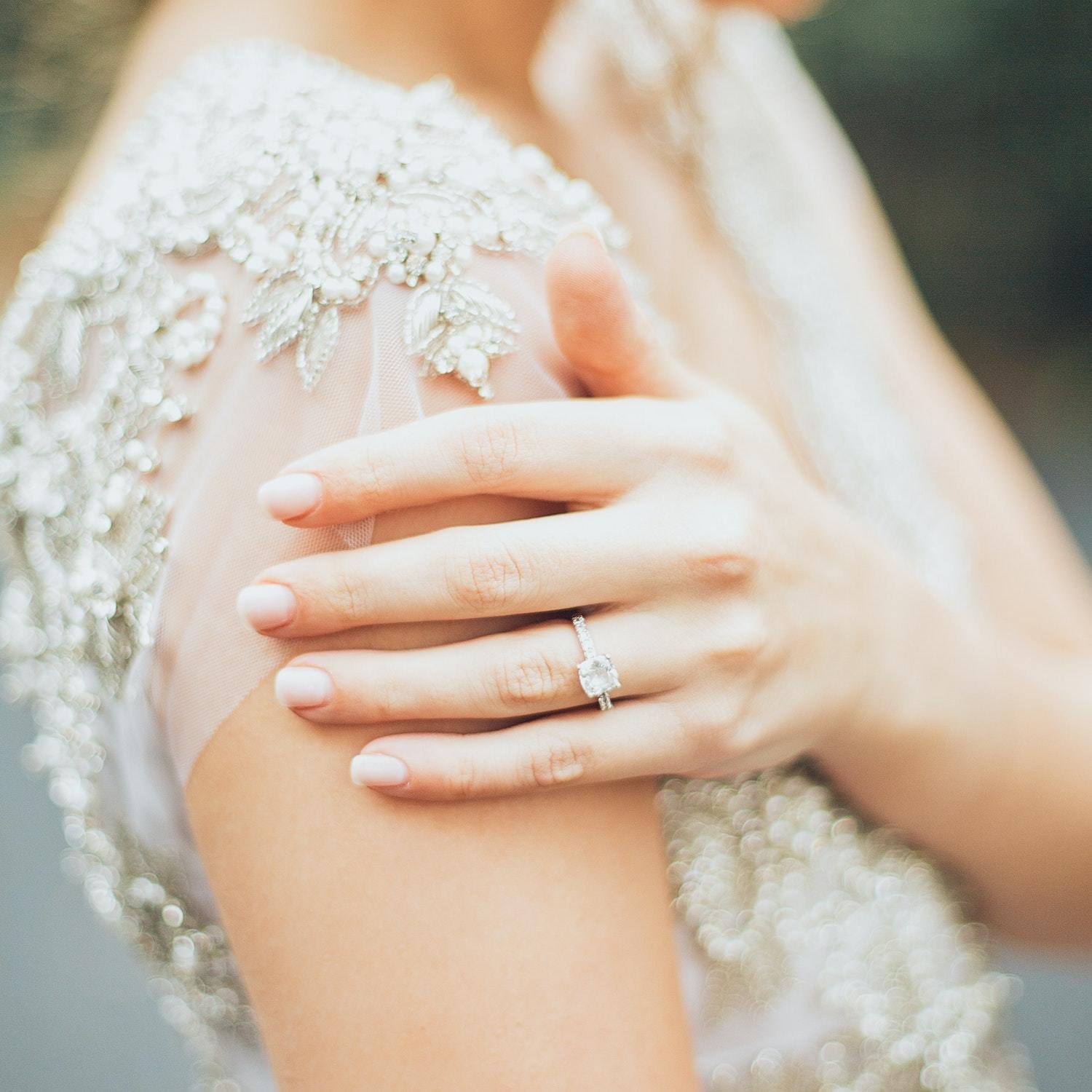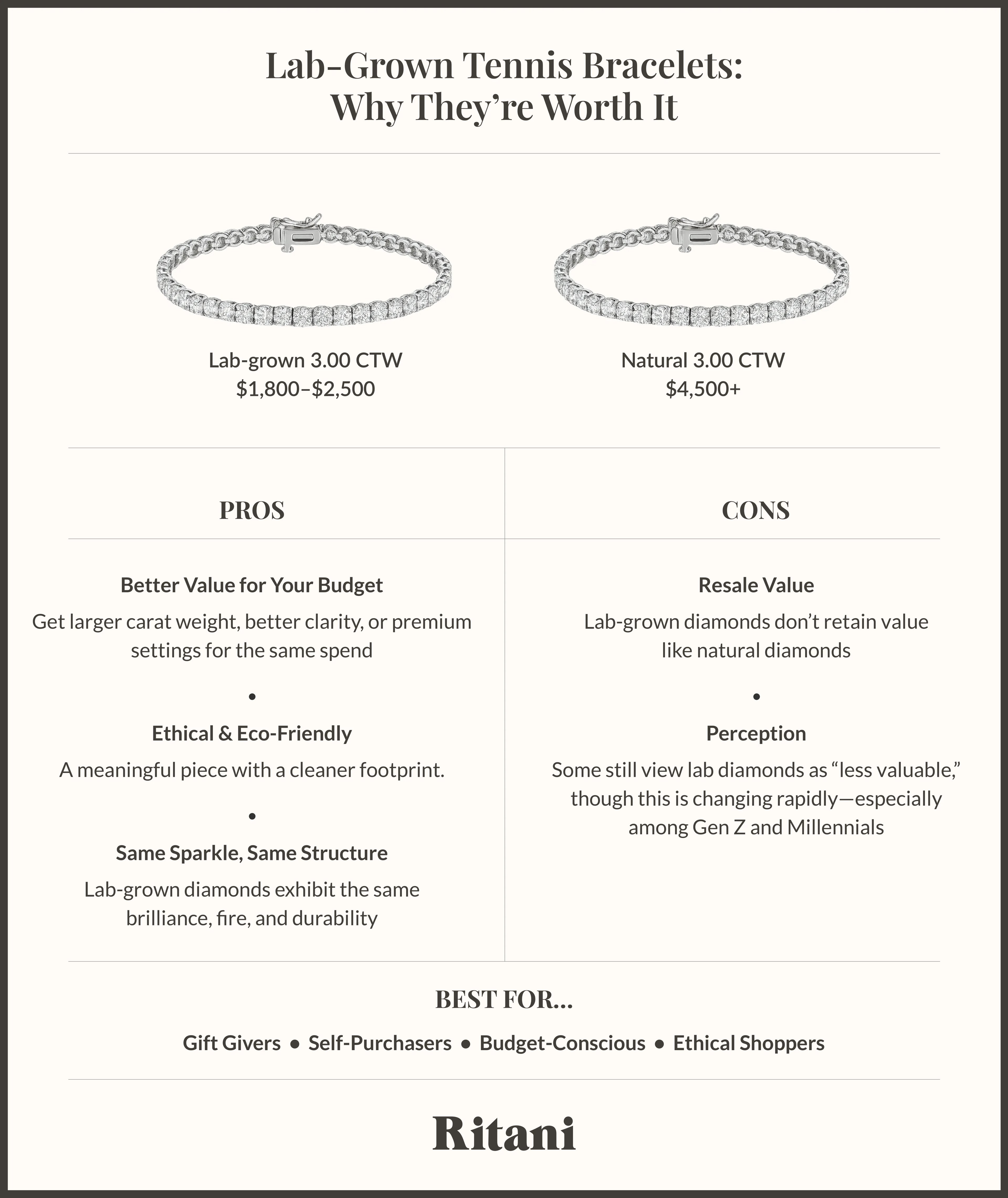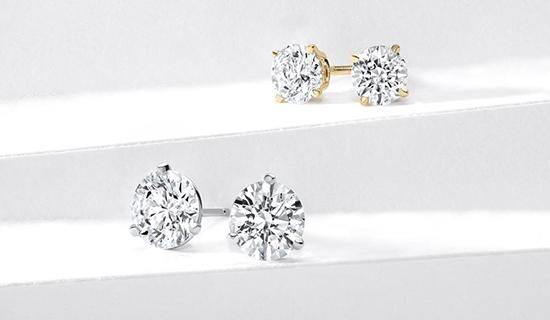How to Buy a Sapphire Engagement Ring
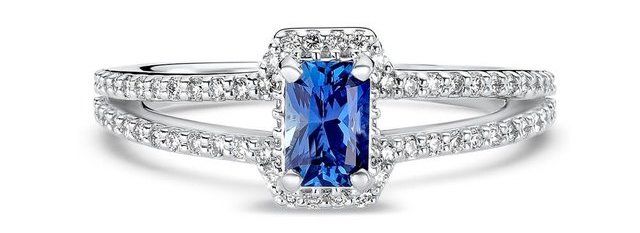
Sapphire engagement rings are a beautiful and sophisticated choice. If you’re intrigued by sapphire engagement rings, you’re not alone – these are some of the most searched engagement rings on Google.
Sapphire engagement rings have a rich history. Sapphires have been used in rings and fine jewelry for centuries, originally mostly by royalty. The most renowned engagement ring worldwide is Kate Middleton’s (once Princess Diana’s) oval-shaped sapphire engagement ring.

Today, anyone, royalty or not, can find a beautiful, affordable sapphire engagement ring. Keep reading to learn how to buy a sapphire engagement ring.
What is a Sapphire?
Sapphires are one of the few precious gems, aside from ruby, emerald, and diamond. They are both valuable and rare. In fact, high-quality sapphires are even rarer than diamonds. Although sapphires are typically thought of as blue, they can come in practically any color, except for red.

A red sapphire is just a ruby – they are both made of the same mineral, corundum. This mineral is very dense and is the hardest natural mineral after diamond. Sapphire has an impressive hardness of 9 on the Mohs scale, meaning it won’t scratch easily. This makes it a great gemstone for everyday wear. While sapphires are naturally occurring (primarily mined from Sri Lanka, Madagascar, Australia, and even Montana) they can also be lab-grown. Like lab-grown diamonds, lab-grown sapphires are much more affordable than their mined counterparts.
What Does Sapphire Mean?
Sapphires are said to symbolize faithfulness, nobility, sincerity, and truth, making them a beautiful choice for your engagement ring.
Sapphire is also September’s birthstone. If your partner’s birthday is in September or your anniversary is in September, a sapphire will make a meaningful and thoughtful choice for your engagement ring.
Choosing the Right Sapphire
For a beautiful engagement ring, it’s essential that you choose a high-quality sapphire. It’s important to note that the GIA does not grade sapphires or provide a quality analysis for them the way they do with diamonds. You can view a sample GIA-colored stone report here.
Sapphires are still usually graded independently by jewelers on their color, cut, clarity, and carat weight. Sapphires can receive an AAAA, AAA, AA, A, or B grade.

AAAA: These sapphires are the rarest and most expensive. These stones are typically collector’s items. They make up the top 1% of natural sapphires. AAAA sapphires have high brilliance, a deep hue, and are very slightly included.
AAA: These make up the top 10% of natural sapphires. This grade provides the best blend of quality and value. This rare grade has minimal inclusions and medium or rich hues.
AA: Grade AA sapphires make up the top 20-30% of natural sapphires. These sapphires will have a medium to dark hue and some inclusions.
A: Grade A sapphires are good quality. These darker-colored sapphires will have lots of inclusions, and make up for 50 to 70% of sapphires.
B: Grade B sapphires have poorer color and visible inclusions. These are considered commercial-quality gemstones. Most natural sapphires are grade B.
Color
Color has the largest effect on the value and grade of a sapphire. The more vivid and intense the stone’s color, the more valuable and desirable it will be. Lower-quality sapphires will appear dark and opaque. The stone’s color will be listed in a GIA Colored Stone Report.
The color of a sapphire is determined by three factors: hue, saturation, and tone.

Hue
The hue is the stone’s basic color. Most gemstones have a primary and a secondary color within them – sometimes they even have a tertiary color. In general, royal blue is the preferred hue for a sapphire, but if another hue like purple or green strikes your fancy, go for it!
Tone
A gemstone’s tone refers to how light (or dark) a stone will look. A stone that is too dark or too light is less desirable. Go for stones with a medium tone.
Saturation
Saturation refers to how intense or vivid the stone’s color is. The more saturated a stone is, the more expensive it will be.
Cut
The quality of a stone’s cut will impact its brilliance (how much light it reflects) and its overall beauty. Colored stones aren’t graded as strictly for cut as diamonds are, so GIA reports will not indicate the quality of a sapphire’s cut. However, a GIA report will specify the cutting style of the stone’s crown and pavilion (for example, step-cut or brilliant-cut). Look for sapphires that are symmetrical (a sign of excellent cut quality) and have a centered table (the stone’s top, flat surface).

The above sapphire exhibits poor symmetry – its table is off-center, and so is the stone’s culet.
Clarity
Clarity refers to how many (or how few) inclusions a stone has. Most sapphires have inclusions. Inclusions are naturally formed imperfections on the inside of the stone. Too many inclusions can take away from the sapphire's beauty. The fewer inclusions a stone has, the rarer and more valuable it will be.
There are three different types of clarity grades for sapphires: Type 1, Type 2, and Type 3.
Type 1: Type 1 stones are eye clean and have few inclusions. “Eye clean” means that the stone’s inclusions will not be detectable to the unaided eye. These stones are rarer and pricier.
Type 2: Type 2 stones have some small inclusions that are noticeable to the naked eye. These stones are still attractive.
Type 3: Type 3 stones have inclusions that are visible to the naked eye and detract from the beauty of the stone. These are the least expensive stones.
We recommend opting for Type 1 or Type 2 stones to ensure a beautiful sapphire.
Carat
Sapphires are denser stones, so a one-carat sapphire will appear smaller than a one-carat diamond. While some jewelers sell their sapphires by carat weight, many simply indicate the stone’s measurements in millimeters so shoppers can more accurately understand the stone’s face-up size. The GIA will report a sapphire’s size in millimeters rather than its carat weight in a grading report.
The following chart shows approximate carat sizes based on measurements in millimeters for round-cut sapphires:
Round-cut Sapphire Size (mm) | Approximate Carat Weight (ct) |
2mm | 0.05 ct |
3mm | 0.15 ct |
4mm | 0.34 ct |
5mm | 0.65 ct |
6mm | 1.05 ct |
6.5mm | 1.41 ct |
7mm | 1.60 ct |
8mm | 2.25 ct |
10mm | 4.50 ct |
If you’re interested in an oval-shaped sapphire (another popular sapphire shape), use this chart:
Oval-cut Sapphire Size (mm) | Approximate Carat Weight (ct) |
5x3mm | 0.35 ct |
6x4mm | 0.60 ct |
7x5mm | 1.00 ct |
8x6mm | 1.55 ct |
9x7mm | 2.20 ct |
10x8mm | 3.15 ct |
11x9mm | 3.80 ct |
12x10mm | 6.00 ct |
14x10mm | 7.25 ct |
Cushion-cuts are another popular sapphire shape. Use this chart to see the approximate carat weight of a cushion-cut sapphire based on its measurements in millimeters.
Cushion-cut Sapphire Size (mm) | Approximate Carat Weight (ct) |
2mm | 0.10 ct |
2.5mm | 0.15 ct |
3mm | 0.25 ct |
3.5mm | 0.38 ct |
4mm | 0.43 ct |
5mm | 0.75 ct |
5.5 mm | 0.95 ct |
6mm | 1.50 ct |
6.5mm | 2.20 ct |
7mm | 3.30 ct |
8mm | 4.50 ct |
Please note that the approximate carat weight can vary on many factors, like how well the stone is cut. A poorly cut stone will have more weight in the bottom portion of the stone, which will make it appear even smaller.
Treated Sapphires
Most sapphires have been treated or enhanced. Untreated natural sapphires are very rare and much more valuable. “Treated” means that the stone has been heated at very high temperatures to permanently improve its color and clarity. Just because you select a natural sapphire does not mean that it hasn’t been treated. GIA reports will specify whether the stone has been treated.
Treated sapphires are much more affordable than untreated sapphires. Sapphires that have undergone treatment aren’t necessarily undesirable – it’s just important to know the difference between treated and untreated sapphires to make sure you are getting your stones for a fair price.
Lab-created Sapphires
Some sapphires are created in a lab. Lab-grown sapphires are far more affordable than mined sapphires. GIA reports will indicate whether your sapphire is natural, or lab-created. Lab-grown sapphires are real sapphires; they are physically and chemically identical to mined sapphires. If you are on a tight budget, you may want to choose a lab sapphire since they can cost about 50% less than a mined sapphire.
Sapphire Shapes
Shape and cut are used synonymously in the jewelry world. Sapphires can be found in pretty much any cut. The most popular sapphire shapes are round-cuts, cushion-cuts, and oval-cuts.
Round-cut Sapphires

Round sapphires are a timeless and classic choice. This is the most popular shape. Round sapphires flatter every finger when set in a ring and are perfect for earrings or pendants. This shape is the most expensive since more of the rough sapphire is wasted.
Cushion-cut Sapphires

Cushion-cut sapphires tend to be less expensive than round-cut sapphires. Cushion-cuts are square-shaped with soft, rounded corners. No matter the gemstone, cushion-cuts are one of the most popular shapes for engagement rings.
Oval-cut Sapphires

This elongated gemstone shape appears larger than other sapphire shapes of the same carat weight. It produces a flattering, lengthening effect on the finger. Like the cushion-cut, the oval-cut is also more affordable than the round-cut.
You can learn more about different gemstone shapes here.
Engagement Ring Settings
The setting is the piece of metal that secures your gemstone to the band. There are many different setting styles to choose from. The setting that you choose can affect the overall vibe of the ring.
Solitaire Engagement Rings

This is one of the most popular and timeless setting styles. Solitaire settings feature a plain band that lets your gemstone really stand out. Solitaires are also typically the most affordable choice since they do not feature extra side stones or embellishments.
Sidestone Engagement Rings

Sidestone settings feature tiny gemstones that line the band to add extra sparkle and brilliance to the ring.
Three-stone Engagement Rings

Three-stone engagement rings feature three stones to represent your past, present, and future. You can select a three-stone ring with diamond side stones to add more sparkle to your ring.
Halo Engagement Rings

Halo engagement rings feature a circle of diamonds surrounding your center stone. This popular style adds extra brilliance and glamour to your ring.
Vintage Inspired Engagement Rings
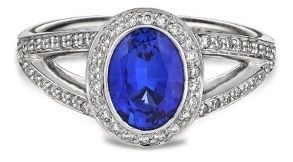
If you are looking for a unique engagement ring, look no further than vintage engagement rings. With vintage-inspired engagement rings, you can get old-world charm with modern gemstone cutting techniques. Vintage-inspired engagement rings will sometimes feature bezel settings, diamond halos, milgrain details, and floral designs. Since vintage-inspired engagement rings tend to be more ornate, they can be pricier than other setting styles.
Choosing the Right Metal
You’ll want to choose the right precious metal for your engagement ring based on your tastes, preferences, budget, and needs.
White Gold

Silver-colored metals like white gold are among the most common precious metals used for sapphire engagement rings since this cool-toned metal looks beautiful with cool-toned gemstones. At Ritani, you can choose either 14kt white gold (58% gold, 42% alloy) or 18kt white gold (75% gold, 25% alloy). 14kt white gold will be slightly more affordable than 18kt white gold since it contains less gold content. White gold may not be the best choice for those with sensitive skin since it can sometimes contain small amounts of nickel.
Keep in mind that white gold will require a little extra maintenance compared to other precious metals. White gold is plated with rhodium to give it extra shine and protection. When the rhodium plating wears off, the metal can look dull and less silver-colored. Over time, your white gold ring will need to be replated. Luckily, Ritani offers this service for free. You can learn more about rhodium plating here.
Yellow Gold

This classic, warm metal looks beautiful with sapphires. Yellow gold is the most hypoallergenic of all the gold varieties. At Ritani, we offer 18kt yellow gold, which is 75% gold, 25% alloy.
Rose Gold

Rose gold looks quite stunning when paired with sapphire. This trendy metal is great for someone who is looking for a unique ring. Keep in mind that rose gold may not be suitable for those with sensitive skin as it gets its reddish hue from copper alloys, which is a common allergen. At Ritani, we offer 18kt rose gold, which is 75% gold, 25% alloy. You can learn more about rose gold engagement rings here.
Platinum

Platinum is a silver-colored, hypoallergenic metal. Its durability makes it ideal for those with active lifestyles. It’s much lower maintenance than white gold since it does not need rhodium plating. However, platinum is much more expensive than other precious metals due to its rarity – it's 30 times rarer than gold.
How much does sapphire cost?
Sapphires tend to be cheaper than diamonds, so if you are looking for a sapphire engagement ring on a budget, you’re in luck. The price per carat of sapphires varies greatly depending on the quality, shape, and origin of the stone. As discussed earlier, lab-created sapphires are much more affordable than mined sapphires. A one-carat sapphire can cost as little as $350 depending on the quality of the stone. For a high-quality one-carat sapphire, expect to spend anywhere between $800 to $2,500.
Bringing your Sapphire Engagement Ring to Life
We don’t sell loose sapphires at Ritani currently, but our gemologists are happy to source your dream sapphire. We can work with you to create a custom engagement ring or choose a pre-designed setting on our website. To get started on designing your ring, chat now or send us an email at [email protected]. You can also browse our preset sapphire rings here.
